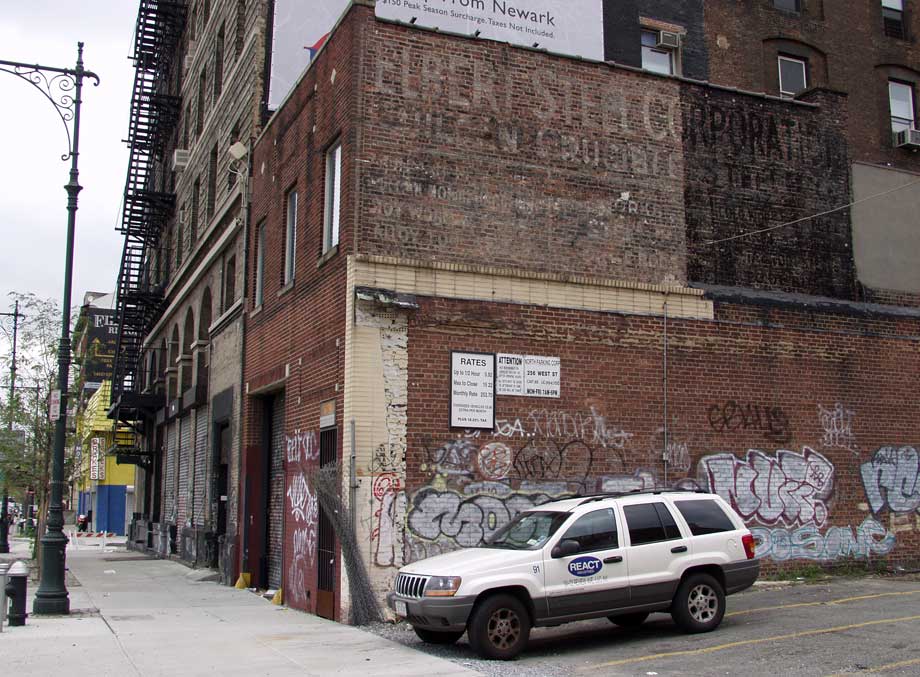

The smaller line beneath Elbert Steel Corporation reads Vulcan Crucible Steel Co. This narrow 2-story building at 259 West St. apparently served both companies as storage and office space. It was erected in 1937 with Elbert Steel Corp. named as owner and Charles Stadler as architect. Elbert Steel was listed at this address in the Manhattan telephone directory from 1938 through 1955.
The Elbert name is very possibly an homage to the founder and initial CEO of U. S. Steel, Elbert Henry Gary (1846-1927). If the name refers to Gary, then the company was probably a subsidiary of U. S. Steel.
The Elbert Steel Corp. may have served as an agent for the Vulcan Crucible Steel Co. Vulcan Crucible was founded in 1901, and its works were located in Aliquippa, Pennsylvania, about 15 miles northwest of Pittsburgh. Their entry in the Directory of the iron and steel works of the United States and Canada, by the American Iron and Steel Institute, 1904, reads, "Vulcan Crucible Steel Company, Aliquippa, Beaver county [Pa]. Partly built in 1901 by Kidd Brothers and Burgher Steel Company and completed in 1902 by the Vulcan Crucible Steel Company; one crucible steel-melting furnace; 30 pots can be used at a heat; first crucible steel made in March, 1902." The same directory in 1916 described the Aliquippa works as "30-pot crucible fur., first crucible steel made March, 1902; 1 A. O. H. fur., first acid steel made June 29, 1903; 12" 3-h. 3-st. and 10" 3-h. 6-st. bar mills, first rolled products made April, 1903; 5 ham. (500 to 8,000-lb.); 2 annealing fur." and their products as "carbon, alloy and high speed tool steel, annual cap., 9,000 tons acid open hearth and 3,000 tons crucible steel ingots."
This advertisement for Vulcan Crucible Steel ran in the journal, Iron Age, Volume 84, 1909.
In the late 1940s one of the buildings at Vulcan Crucible's Aliquippa works was used for uranium-rolling operations under contract with the U. S. Atomic Energy Commission. Uranium billets were formed into rods there, then boxed and shipped to other facilities. Thus, part of the works became contaminated with these radioactive materials. Workers at the site were exposed to high levels of radioactive dust. A federal clean-up removed 951 cubic yards of waste in 1994. A Fact Sheet issued by the U. S. Dept of Energy summarizes this aspect of Vulcan Crucible Steel's history.
Copyright © 2009 Walter Grutchfield